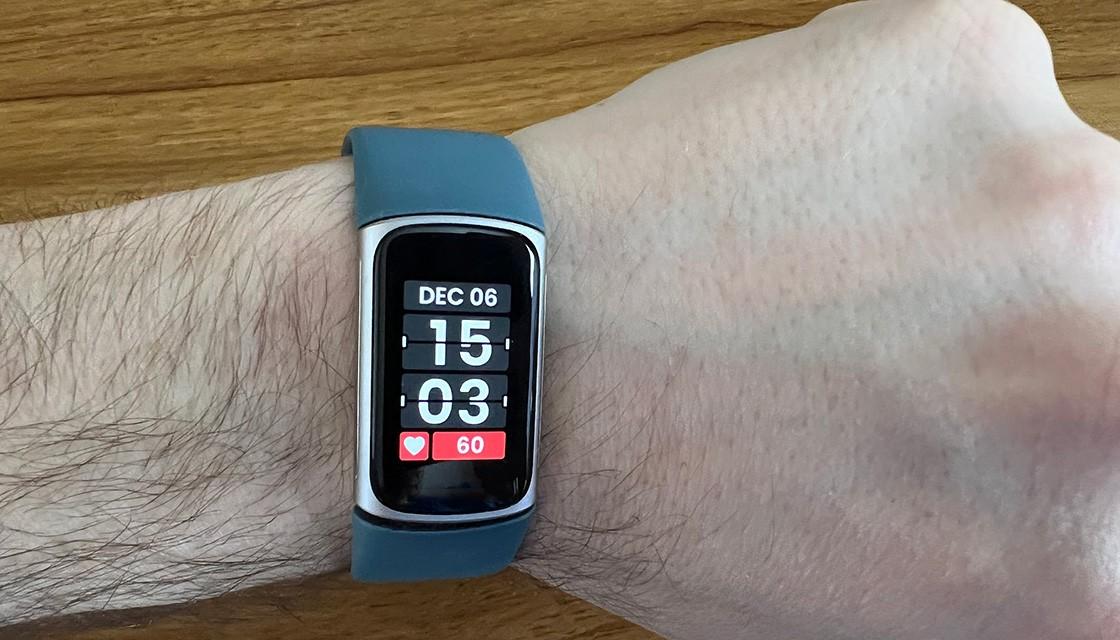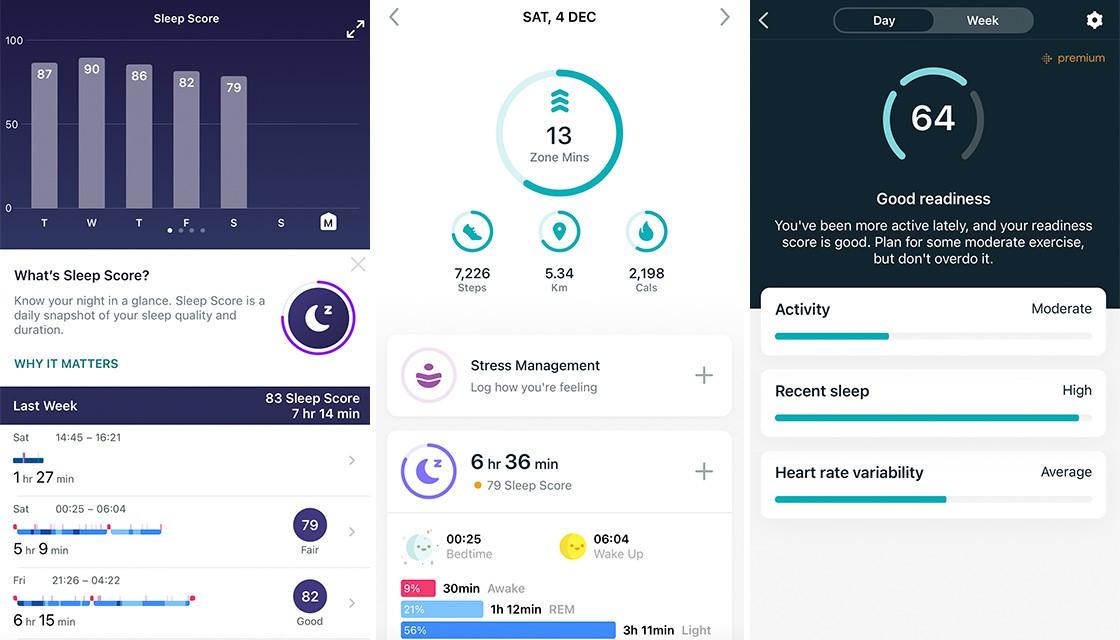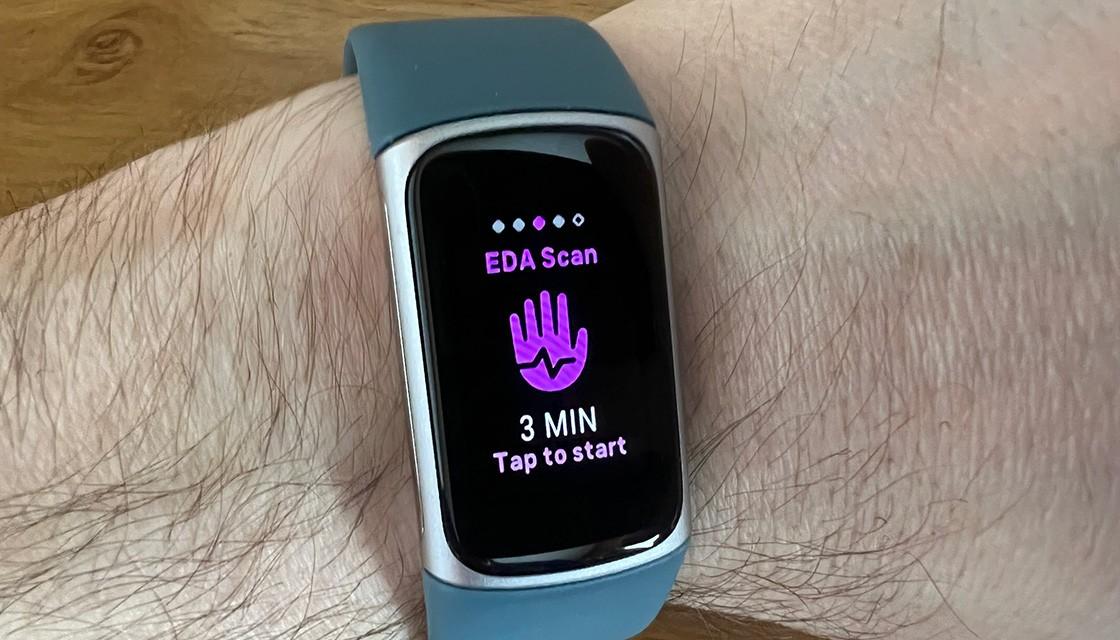
The last time I wore a Fitbit I weighed in at nearly 150kg and walked so rarely that I had owned the device for almost a year before I hit the target 10,000 steps in a day.
Since then, life has changed substantially. I lost 80kg in weight, discovered running and, with it, expensive technology to try and make me more aware of my fitness and become a better runner.
In those years, however, Fitbits have also changed. They're much 'smarter' than they used to be and the screens are miles ahead of the tiny window I had to peer at to see the time of day back then.
The new Fitbit Charge 5 offers even more, including the first colour screen in the Charge range and the addition of an ECG monitor.
So could this relatively inexpensive new device displace my current favourite and earn a permanent spot on my wrist?
I've been using the Fitbit Charge 5 for about a couple of weeks and here are my thoughts.
The good
The two biggest positives with the Charge 5 are the quality of the colour screen and the fantastic battery life.
The screen is bright and clear, if a little on the small side, but very easy to read in any level of light. Some smartwatches - particularly dedicated exercise trackers - don't handle bright sunshine well and you're forced to switch on the backlight to find out the time.
Over the course of 10 days I ran out of battery just once and I only needed to charge it twice - when it ran out and as it was getting low on the tenth day. I wasn't overly active during that time but regardless that is an excellent performance.
For context, my Garmin generally needs charging every third day, more if I'm particularly active. An Apple Watch is much more than an exercise tracker, but those generally need to be charged every single day.
I also found the Fitbit accurate when it came to the important measurements that you buy such a device for.
The heart rate measurements were consistently a couple of beats quicker than my default device but that's not totally unexpected given the accuracy of on-wrist devices compared to other means of measuring.

The same is true for the estimation of calories burned during exercise. There were differences, but not to the point where any red flags were raised.
For the first time ECG functionality has been added to the Charge range and it's easy to access. All you need to do is select the function, touch the metal stripes on the sides for 30 seconds and you are told if there are any abnormalities identified with your heartbeat.
While Fitbit is quick to point out this isn't to be used for medical purposes, such functionality on smartwatches has been known to help people identify potential issues and seek out help from professionals.
It also takes plenty of other measurements too - like oxygen saturation (Sp02) levels, skin temperature tracking and heart rate variability.
I tend to use these for comparative purposes only. A single number at any given point really isn't all that useful, but if a trend over weeks and months shows an increase or decrease then it may be an indication that something has changed and worth seeking advice.
One thing I was happy about was the lack of skin irritation from wearing this 24/7. I actually had to give up wearing a previous Fitbit due to inflamed, itchy and sore skin from the strap, but had zero issues with comfort during the entire time I was wearing this new one.
Throw in contactless payment functionality, 50m water resistance, an app that is easy to use and the ability to receive notifications from your phone: All together, you've got a pretty useful device.

The undecided
In general, I get pretty angry with companies that charge to unlock functionality that's already built-in and just requires a software unlock - but I'm not furious with Fitbit yet.
My previous Fitbits were in the pre-Premium add-on days so this was my first introduction to the subscription model that will set you back $16.99 per month or $139.99 per year.
There are things available to subscribers that may well be value added and aren't related to the function of the watch like mindfulness sessions, video workouts and recipes.
However others, like the daily readiness score - a measure of how ready you are to workout or whether you should be prioritising recovery - and advanced sleep metrics should absolutely be considered a core part of the experience.
Charging extra for that just doesn't sit well with me and it would definitely give me pause to consider buying one.
Fitbit does give a free trial of Premium with every purchase, in this case six months. That gives people enough time to evaluate whether those functions are worth the extra cost to them and to unsubscribe if they don't want to pay.
Long-term I don't see the value. I use other apps for mindfulness, exercises and recipes and I'd much rather pay up front than an ongoing subscription; but the simplicity offered here may be enough to justify the premium cost for some.

The bad
One thing that didn't impress me was the selection of clock faces for the Charge 5. There were plenty of designs but I only found one that I really liked called 'retroflip', which reminded me of a clock at my Auntie Annie's house.
I think I knew right then that the Charge 5 wasn't for me. The clashing of bright colours on many of the faces made me want to reach for my sunglasses or hide it under my sleeve.
It's not helped by how large the internal bezels are. The screen's usable area is cropped significantly, particularly at the top and bottom.
This really limits the amount of information that can be shown and, presumably, explains why some of the clock faces have partially obscured numbers.
While the touchscreen is responsive, I was also left craving a button or two to make everything more navigable. You do get used to swiping up and down, left and right on the screen but combined with its small form it never felt totally natural to me.
I had some issues with the dynamic GPS function in the watch, too. To save battery, if you have your phone with you then by default it uses the phone's GPS to accurately measure distance.

For whatever reason, the first exercise I did with the Fitbit overstated my efforts by over 3km even though my phone's measurements seemed accurate and my other devices were showing the correct distance.
In the end I switched to using the internal GPS all the time and this proved much more accurate.
I also wasn't impressed with the small number of in-built exercises you can store for tracking on the Fitbit. You're limited to just six at any one time, although you can use the app to add and remove as needed.
Those kinds of limitations just feel a little unnecessary these days. Surely some more could have been fitted on?
I also found that rotating my wrist didn't always wake up the Charge 5, so had to do a lot of double tapping. In the end I left it switched on all the time and took the hit on the battery.
The final thing I wasn't a huge fan of was the EDA scan, a measure of the electrodermal activity on your skin which gives you an understanding of your stress levels.
To do so you have to put your thumb and forefinger on the metal sides, the same as if you're doing an ECG measurement - but this time for three minutes, during which you've got to sit still.
I just found it awkward to hold the pose for that long. Regardless, my brain is very good at letting me know when I'm stressed, so I'm not convinced a reading on a smart device is going to help me either identify or deal with such issues.

The verdict
If you're new to fitness bands and perhaps looking for something to support your New Year's resolution to up your activity, then the Fitbit Charge 5 has a lot to offer.
Coming in at around the $300 mark, it's cheaper than many smartwatches and fitness trackers, while offering similar functionality.
The clarity and quality of the screen, especially compared to the older models I'd used, make this the best Fitbit of its form on the market.
However that form means it's not for everyone - myself included.
I prefer my fitness trackers to look much more like a watch. It suits my wrist better and I've become used to multiple fitness measurements being available at a glance on my Garmin.
The small size of the Charge 5's screen can't compete with that and I suspect dedicated athletes are going to want something a bit more specialist - particularly if you use an external Bluetooth heart rate monitor to get more accurate measurements.
For those who aren't as serious and prefer something more discreet on their wrists, then this could well be the device that helps you to achieve those goals you've set for yourself.
Newshub was supplied with a Fitbit Charge 5 for this review.


